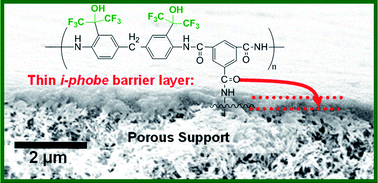Novel thin film composite membrane containing ionizable hydrophobes: pH-dependent reverse osmosis behavior and improved chlorine resistance†
Abstract
New polyamide thin film composite

- This article is part of the themed collection: Advanced materials in water treatments

 Please wait while we load your content...
Please wait while we load your content...